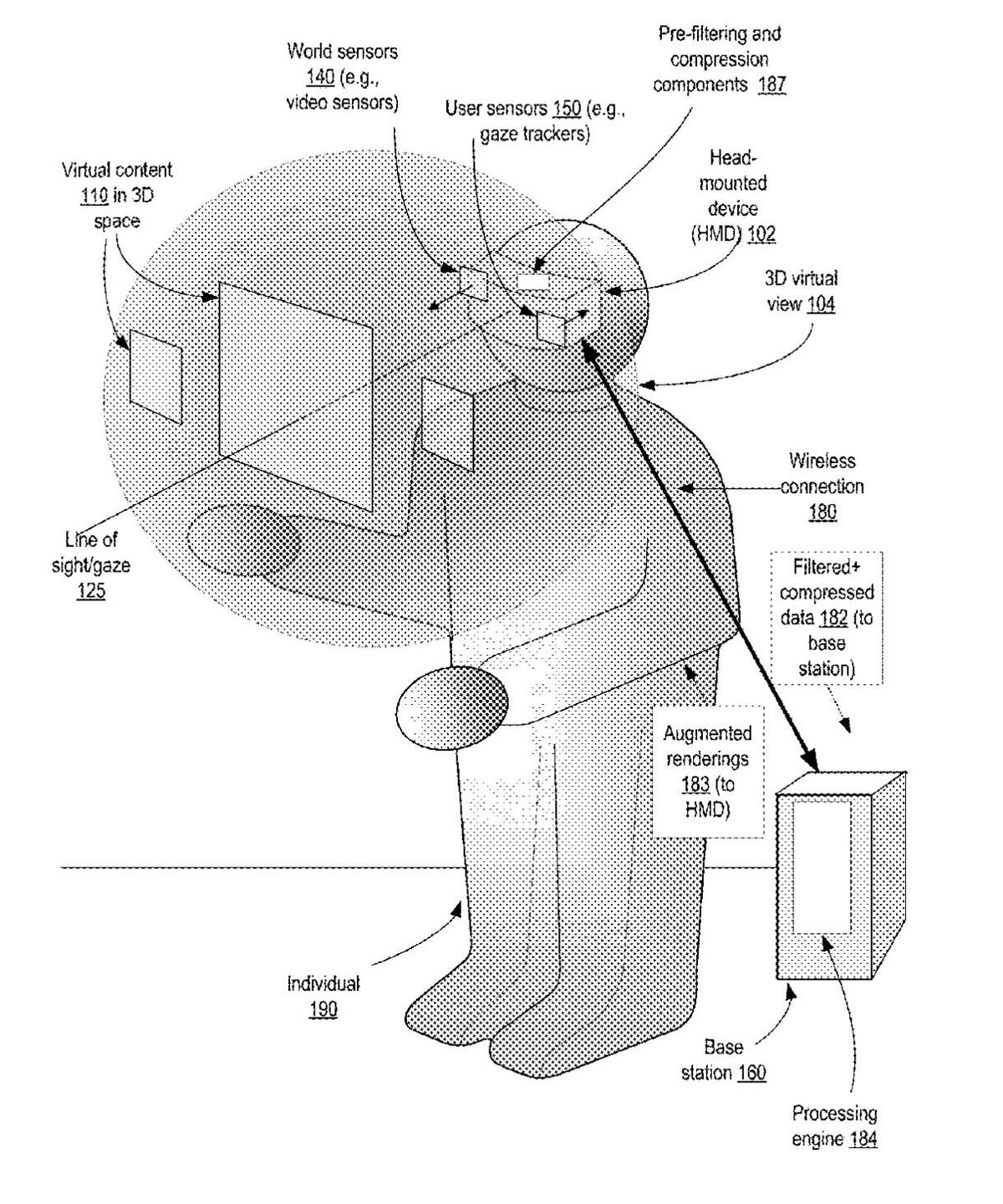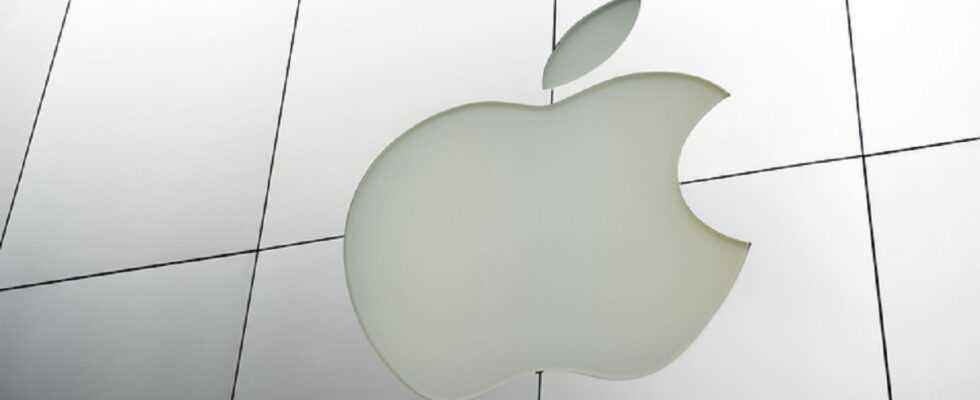Apple had a busy July in patent filings for virtual reality (VR) technology. And this is reflected in the applications made to the US Patent & Trademark Office (USPTO) by the company. We took a look at it.
Three patent applications respectively describe means of detecting the direction in which a person is looking when wearing a helmet using infrared light; adjusting the resolution of an image a person sees to mimic the “foveation” of the eye; and a system to compensate for motion sickness when a person is in a car looking at a screen in VR.
These three patents are “continuations” of earlier applications that have been submitted in recent years and to which the USPTO subsequently granted patents. “Continuation” is the technical term which generally means a change in what is claimed from what was previously claimed.

Apple’s revised claims for VR and AR headset technology emphasize a set of user behavior data, including hand, head and face gestures. Picture: Apple.
In this sense, a continuation patent filing can represent a significant improvement over what was previously claimed. The differences can be subtle, but interesting.
“Behavioral Dataset”
For example, US patent application 2022/0222790 AI, published July 14, is a continuation of patent 11,295,425 B2, granted in April. In both cases, what is patented is a filter that combines on the screen two different renderings of a video to be seen through a virtual reality or mixed reality headset. The goal is to achieve foveation, that is, the change in resolution depending on where a person’s gaze is directed, in order to make a scene more realistic.
In the published patent, the focus was on these two layers of video. In the new application, the 20 original claims of this patent are replaced by 40 entirely new claims. The language is largely the same, but one distinction nevertheless stands out: the world of “behaviour”.
The new request prominently mentions the behavior, as in user behavior, using the term 24 times, compared to only three times in the previous version.
In this case, behavior refers to a “behavioral data set”, a collection of data gathered from sensors, about the gestures a person wearing the headset might make, including a hand or face gesture or a movement of the head. The idea is that these user behaviors influence how the filter switches between views of the environment.
Data integration beyond 3D
Patent application 2022/0236799 refers to a gaze tracking system using infrared light directed towards the eyeball to see where the wearer is directing his gaze. It is a continuation of the patent published under the number 11360557, published in June. The application provides more details on how the diffraction grating, which filters infrared light, is combined with the lenses and infrared detectors.
The third patent application, 2022/0222904, describes replacing a passenger’s normal view when traveling in a moving vehicle with a simulated view of the world in VR, in order to prevent motion sickness. This is a continuation of issued patent 11,321,923, issued in May.
As for application 2022/0222790, the original claims of patent 11321923 are all deleted and replaced by new claims. Among the subtle variations, we note that in the original patent it is said that the device would obtain inputs of “three-dimensional (3D) model data of the real environment and sensor data of the vehicle”, the new version says that the entries “will include visual cue indications of an environment outside of the vehicle, and in which the environment includes other vehicles”.
It looks like a system that includes things that aren’t just 3D data.
To go further on the Apple VR headset
Source: ZDNet.com
